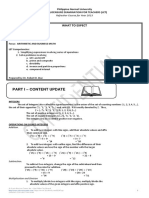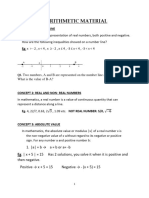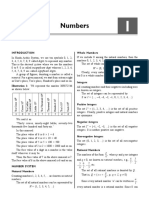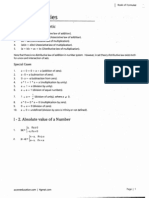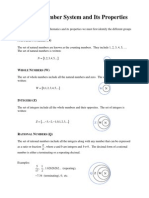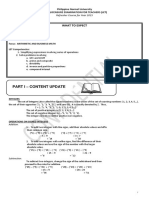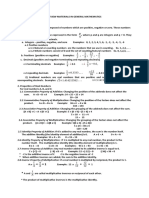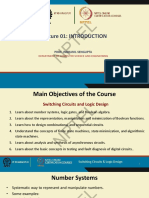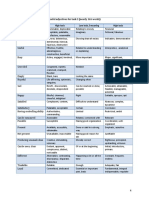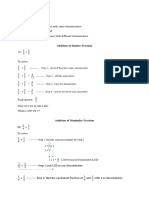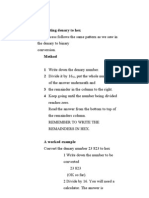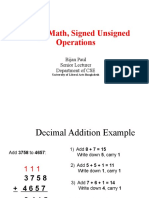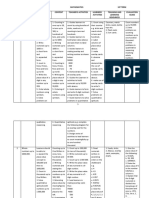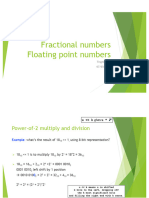0% found this document useful (0 votes)
138 views5 pagesSection 1 - Number Theory Notes
This document provides information about number theory and computation concepts including:
(1) Place value charts for base 10 and binary number systems. Binary addition and subtraction rules are given.
(2) Expressing one quantity as a fraction of another using common units.
(3) Defining sequences and identifying rules for numeric patterns.
(3) Explaining the commutative, associative, and distributive laws as they relate to addition, subtraction, multiplication, and division. Identity elements and inverses are also defined.
Uploaded by
EMMA SLAYCopyright
© © All Rights Reserved
We take content rights seriously. If you suspect this is your content, claim it here.
Available Formats
Download as DOC, PDF, TXT or read online on Scribd
0% found this document useful (0 votes)
138 views5 pagesSection 1 - Number Theory Notes
This document provides information about number theory and computation concepts including:
(1) Place value charts for base 10 and binary number systems. Binary addition and subtraction rules are given.
(2) Expressing one quantity as a fraction of another using common units.
(3) Defining sequences and identifying rules for numeric patterns.
(3) Explaining the commutative, associative, and distributive laws as they relate to addition, subtraction, multiplication, and division. Identity elements and inverses are also defined.
Uploaded by
EMMA SLAYCopyright
© © All Rights Reserved
We take content rights seriously. If you suspect this is your content, claim it here.
Available Formats
Download as DOC, PDF, TXT or read online on Scribd
/ 5














